Gift of love: Queensland’s first heart transplant mother
AMANDA Hill tapped out these words in a text to a friend, but the gravity of her plight was yet to sink in. And it was all because of a flu-like virus
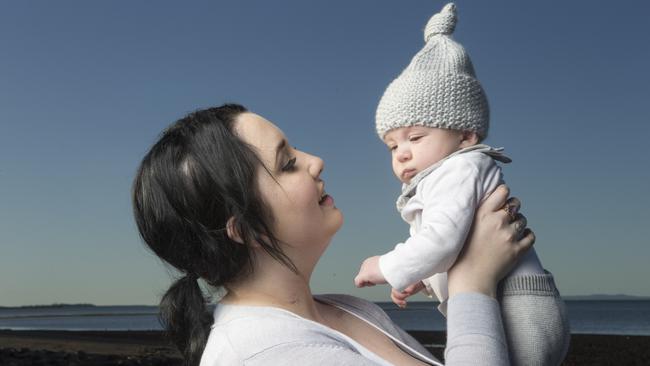
News
Don't miss out on the headlines from News. Followed categories will be added to My News.
I’M in heart failure, I may not make it.”
Amanda Hill taps out the words in a text to a friend, but the gravity of her plight is yet to sink in.
The 20-year-old has been admitted to hospital for the first time in her life. She’s rarely been sick, apart from the occasional cold, the odd stomach bug and a bout of chickenpox in childhood, so the doctor’s message, delivered with little attempt to soften its impact, is confronting: “You’re in critical heart failure. Get your family and friends in.”
Hill hears the words and sees the tears of her mother, Bindi Leech, but the armour of youth acts as her protector.
“I didn’t take it seriously at that point,” she says.
“To me, it was still a joke. It didn’t seem real. I was like: ‘I’m 20. They’re going to tell me tomorrow that it’s all a big mistake’.”
It wasn’t. A flu-like virus had attacked her heart, which was inflamed and working at only about 20 per cent capacity.
In medical-speak, she had severe viral myocarditis. For Hill to survive, she might need a heart transplant and that was not available at Mater Private Hospital, in South Brisbane, where she was first assessed.
She was transferred by ambulance across the Brisbane River to Prince Charles Hospital, home of Queensland’s only heart transplant unit, at Chermside, in the city’s north.
It was early March, 2012. Before the end of the month, as she was being prepared for an X-ray, her heart stopped beating for the first time.
“I remember saying to Mum, ‘I feel really dizzy’,” Hill recalls.
“Then, all of a sudden, I was in a field, a big grassy field. There was sun and it was warm and lovely. I don’t know if that’s the light that they talk about. I just wanted to stay there. I could hear people saying my name and making the conscious choice to come back.”
This was not her time to die.
A day later, Hill had another cardiac arrest. For the second time in 24 hours, a “Code Blue” was called — the universal hospital emergency term for a patient requiring resuscitation.
She did not feel the warmth of the sun this time.
“I don’t remember a thing until I came to while they were zapping me,” Hill says, referring to the defibrillator paddles used to shock her heart back into a normal rhythm.
“They had told me I wouldn’t survive if I went into cardiac arrest again.”
She proved the doctors wrong. But after two cardiac arrests, her medical team needed to act. Fast.
Hill recalls “crushing” a nurse’s hand as she was wheeled into an operating theatre for emergency surgery to connect her to a ventricular assist device, or VAD — a portable, mechanical pump designed to boost the function of her heart until a donor organ became available. She awoke with an incision from the top of her chest to just above her navel.
Surgeons had to cut through her breastbone to access her heart. Simba, a tattered, stuffed toy lion she’s had since she was four, was in bed by her side, ensconced in a plastic bag to prevent it from infecting her wounds. Her fluffy companion was a tiny piece of home in an alien environment.
Two tubes, about the thickness of an adult’s finger, were protruding through her skin, connecting her to an external pump, which was strapped to her abdomen. The tubes were attached to the left ventricle of her heart, carrying blood to the pump and returning it to her aorta, the body’s biggest artery. The pump was connected by a cable to a portable power source and an electronic control unit, which could be pulled around like a suitcase on wheels. Worth about $50,000, and weighing 20kg, the VAD was assisting her ailing heart to circulate blood throughout her body. A machine, which sounded like a “really loud clock”, was keeping her alive.
“People would look at me like I was pushing around a ticking bomb,” Hill says.
As she waited for the call that would save her life, Hill worked with a hospital physiotherapist to ensure her body was in the best shape possible for heart transplant surgery. “I ended up feeling really healthy on the VAD,” she says. “I was doing 14km a day on an exercise bike and going to the hospital gym in the afternoon.”
Fed up with spending so much time inside, she would encourage the physiotherapist to take her for walks in the fresh air and sunshine. She needed a trained carer with her 24 hours a day in case of a malfunction.
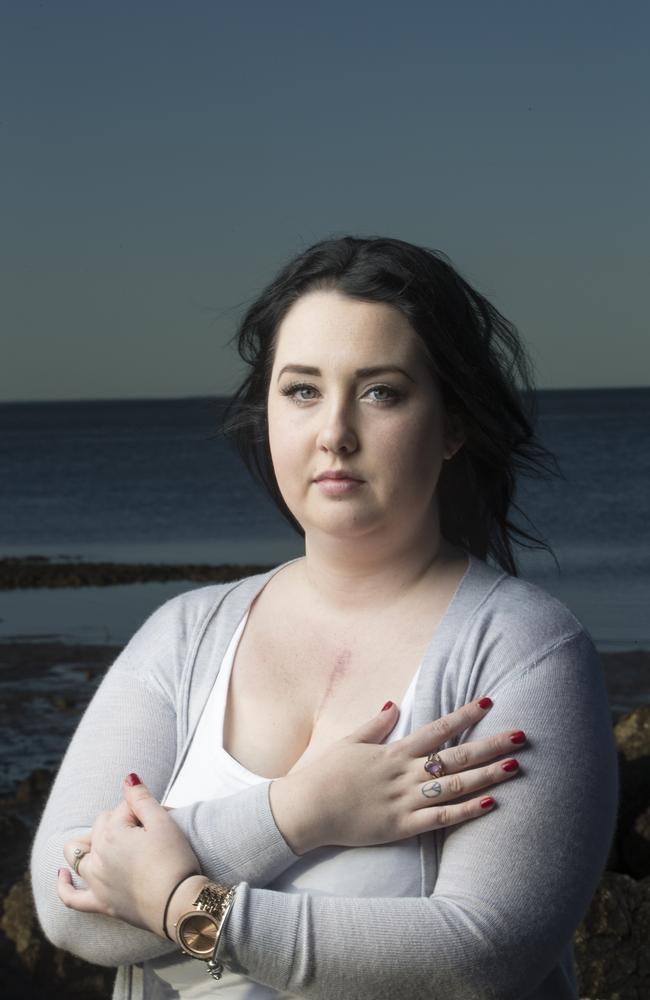
Cardiologist Dr George Javorsky, Prince Charles Hospital’s Heart Transplant Unit director, says the VADs give patients such as Hill more time until a compatible donor heart becomes available. Without them, more people would die on the transplant waiting list. Javorsky says one Queensland patient survived for 14 months on a VAD before he successfully received a heart transplant. But the mechanical pumps, which have been available in Queensland since about 2003, are not without potentially life-threatening problems.
“Complications like bleeding, strokes and infections are the ones we worry about the most,” Javorsky says.
There can be complications with medical equipment, too. In Hill’s case, about four months after her VAD was inserted, one of the leads connecting the pump to the power source and control unit started to split. An X-ray of the cable showed the outer level of three layers had cracked. Not wanting to risk more open heart surgery to replace her VAD, doctors wound specialist medical tape around the damage after seeking advice from the device’s manufacturer. They placed her on the “urgent” heart transplant list — restricted to patients needing a donor organ within 14 days. Her lifeline was being held together by what, to Hill, looked like duct tape.
Her medical team could not risk the problem worsening. She was assigned bed rest while she waited for a transplant. Within days, Hill was being prepared for surgery to receive a new heart. While the family of a stranger grieved, she admits to feeling excited that her time as a medical
prisoner was coming to an end. “I know it sounds terrible because of what the other family was going through but I was just so over having a 24-hour carer and no freedom,” Hill says. Time for reflecting on the gift she had been given would come later.
HILL WAS WHEELED INTO SURGERY AT 10.10 on a winter’s night in 2012. Under strict protocols, the date of her transplant must remain secret to protect the privacy of both the donor family and Hill. When she awoke the next day, the VAD, which had been her “heart in a suitcase” for months, was gone. She recovered well after the transplant and was home in time to celebrate her 21st birthday with family and friends in August, less than six months after her ordeal began. By her side was Joe Reid, an old friend from high school days. Hill and Reid had gone out briefly as 16-year-olds and remained good friends, speaking every few days.
When she first fell ill, she kept him at arm’s length, speaking to him on the phone but not allowing him to visit her in hospital. “I just wanted updates to make sure she was all right,” Reid says. “When she told me she had heart failure and might need a transplant, it was a bit surreal, to be honest.
“Eventually, she let me visit. Seeing all the tubes and whatnot hanging out of her … it’s something you don’t forget. It changed me. I used to go out drinking every weekend but after I saw that, I thought if that can happen from a virus, we’re doing damage to our organs just by drinking. I barely drink any more. I calmed down and got stuck into work and finishing my apprenticeship.”
As Hill waited for her heart transplant, Reid was falling in love in the most unlikely of circumstances. “I just kept talking to her and visiting, making sure she was all right,” the carpenter says. “We’re open and honest with each other. I learned a lot about her and she learned a lot about me. She wasn’t really ready for anything because she didn’t know what was going to happen. I just thought, yeah, she’s a bit of a weapon.
I’d love to be with someone like that, strong-minded. And then she was out of hospital.” The pair have been “pretty much inseparable” since.
About a year later, Reid proposed during a walk around Cleveland Point, a bayside suburb of Redland City, east of Brisbane, near their home. “Me, being the type of person I am, I was in my footy shorts and my work clothes,” he says. “We took one of our dogs for a walk. The sun was setting. It was quite beautiful. There were pelicans floating by and I thought, this is it. I’m doing it. Because I was wearing footy shorts I didn’t have any pockets, so I had to hide the ring in my hat. I pulled my hat off and got down on my knee.”
They were married last October and at 6.59pm on March 25 this year, Arthur William Reid was born four weeks early after a six-and-a-half-hour labour at Royal Brisbane and Women’s Hospital. He was the first baby born to a woman in Queensland after a heart transplant.
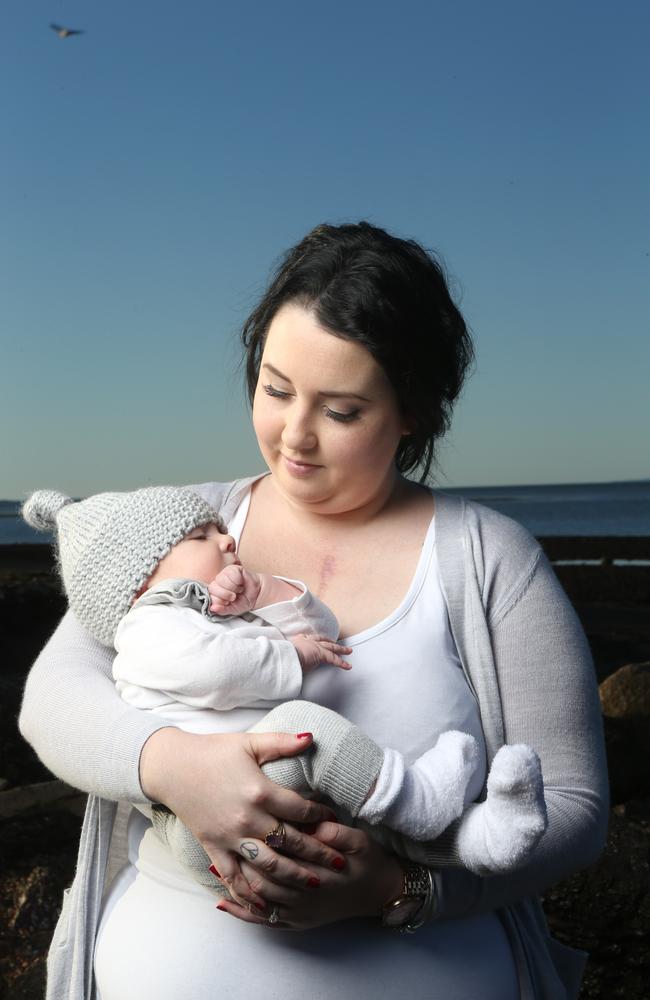
MORE THAN 365 HEART TRANSPLANTS HAVE been performed at Prince Charles Hospital since Lynn Walker received the first one in Queensland 25 years ago. Walker, who was 49 at the time, is still alive and living in a Toowoomba retirement village, west of Brisbane, with his
wife of 53 years, Brenda. “I knew I was on my last legs,” he says of life before his transplant, made necessary after a series of heart attacks. “I couldn’t walk down to my mailbox to get the mail. I was just about had it.”
He was already a grandfather of two when he was given his new heart but the now-74-year-old has lived to see two more grandchildren born and next month will welcome his fifth great-grandchild. “It must have been a good heart because I’ve got a lot of use out of it,” he says.
Walker left the police force in 1986, deemed medically unfit. He did not return to work after receiving his donor heart in 1990, unsure how long he would survive. Two years post-transplant, he and Brenda bought a caravan and went exploring. “I just wanted to get on with my life and enjoy my family as best I could because I didn’t know how long I had in me,” he says.
In the years since Walker’s surgery, most Queensland donor heart recipients have been male, with a median age of 47 at the time of transplant. Javorsky, who has worked as a heart specialist at Prince Charles for 11 years, says Australia-wide figures show the median survival after a heart transplant is 14 years, compared with a decade in the US. He says fewer than ten of the Queensland recipients have been women of child-bearing age. “Some of the women have got a disease where there’s a genetic predisposition for them to have a bad heart,” he explains. “They don’t want to pass it on.”
Hill, now 23, was determined to become a mother despite her transplant. But before she could risk a pregnancy, she needed her medical team’s backing. Her daily cocktail of drugs, prescribed to prevent her body rejecting the donor heart and to lower her risk of infection, had to be modified to protect her baby. Although no heart transplant recipient had given birth in Queensland previously, she was not venturing into uncharted waters. Queenslanders who had undergone double lung transplants at Prince Charles had already successfully had children and other women, interstate and overseas, had given birth after receiving donor hearts. “Previously, pregnancy wasn’t encouraged, but with knowledge and experience of units overseas, there’s been some understanding of what’s a safe way of moving forward,” Javorsky says.
Hill’s immuno-suppressant drugs were swapped for much older medications less likely to affect her baby. “The concern was we didn’t want the mother’s cardiac function to deteriorate or for rejection to occur because we’ve modified the medications, and we didn’t want to cause harm to the baby either,” Javorsky says. “Over time, there’s been some understanding of which drugs are safer. Fortunately, there were no major issues with Amanda’s pregnancy.”
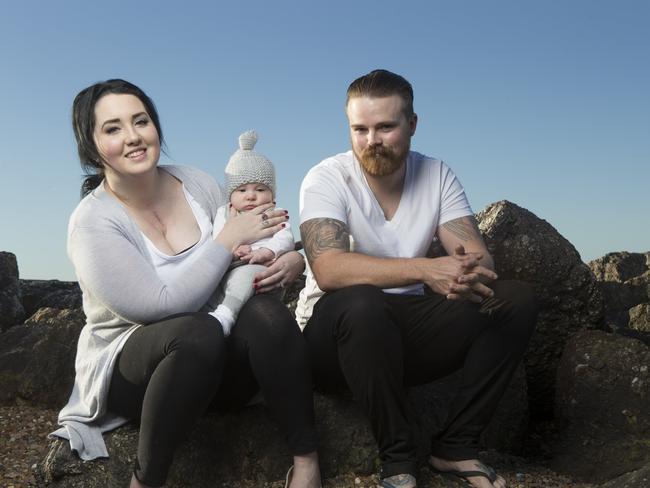
Associate Professor Karin Lust, the RBWH’s clinical director of obstetric medicine, says two more heart transplant recipients have been referred to the hospital for pre-conception counselling since Hill’s pregnancy. “Transplants for all organs have given women who would never have been able to have a pregnancy because their health was so impaired the ability to consider having children,” Lust says. “But we do recommend that they hold off until they’ve been stable for two years post-transplant with no evidence of rejection, and adequate function of the donor organ. It’s most important they have good contraception after transplant and discuss their desires to have a pregnancy with their treating team, because of an increased risk of complications.”
After months of severe morning sickness, Hill was induced about four weeks before her due date when she developed obstetric cholestasis — a build-up of bile acid in the bloodstream which causes extreme itchiness in the mother. RBWH doctors gave her an epidural for pain relief and to take pressure off her heart during labour. “I had absolutely no issue with my heart at all,” Hill says. Arthur, weighing 2665 grams, was delivered by midwives. A grieving family’s decision to donate a loved one’s organs three years earlier not only saved Hill’s life, it allowed her to create a new one.
Hill received her new heart in a record year for deceased organ donation in Queensland — 2012 — when 78 people donated. Numbers dropped to 71 last year, an eight per cent decrease from 2013. But DonateLife state medical director, Associate Professor Leo Nunnink, says the dip follows a 64 per cent surge in deceased donor rates in the five years from 2009 to 2013, when numbers rose from 47 to 77. Nunnink, an intensive care specialist, says the key to improving rates in Australia is for people to sign on to the donor register and to discuss their wishes with family and close friends. Families have the final say about whether a person’s organs are donated after death. Relatives can veto the donation going ahead, even if someone has signed up to the register.
“When the discussion has been had with the family it makes it much, much easier for them to say ‘yes’ to donation,” Nunnink says.
Australia’s organ donor rate stands at 16 donors per million population — up from 11 per million in 2009 — compared with the 35 per million of world leader, Spain. Four in five families in Spain consent to organ donation when asked after a relative’s death — much higher than in Australia. “The biggest thing that would move us closer to Spain is if our consent rate went to 80 per cent,” Nunnink says. “About 40 to 50 per cent of Queensland families who are asked about donation when a loved one dies say no. But what we do know, and there’s good Australian data for this, is that families who say yes to donation, when they’re asked about it a year later, the overwhelming majority feel comfortable with their decision. Many of them feel like it helped them deal with their loss, knowing something positive had come out of it.”
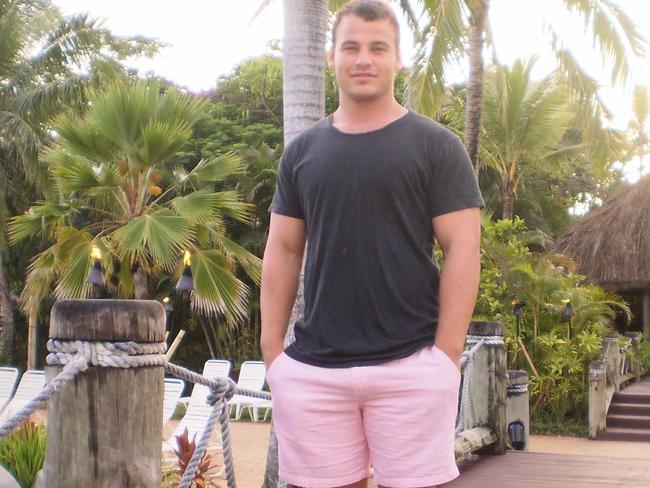
WHEN HALLEY APPLEBY WAS DECLARED brain-dead in the RBWH in mid-2011, the decision to donate his organs had been mercifully already made for his family — mother Sue, father Gary and older brother Josh. A day earlier, the 21-year-old carpenter had sustained severe neck and brain injuries in a rugby tackle. In the weeks before the accident, Appleby had discussed organ donation with his mother and brother after they’d seen a DonateLife advertisement on television.
“Halley never hesitated,” Sue says. “He said: ‘When I’m gone, I won’t be needing them so somebody else may as well make use of them’. We knew very clearly from that what his wishes were. This knowledge shielded us from the anguish of having to make this decision for him; he had made it himself. It was one less thing we had to worry about at such a horrible time.”
Halley provided a priceless gift to five strangers that day — his liver was divided and transplanted into two people, another patient received his “amazingly kind, big heart”, and his kidneys went to separate recipients.
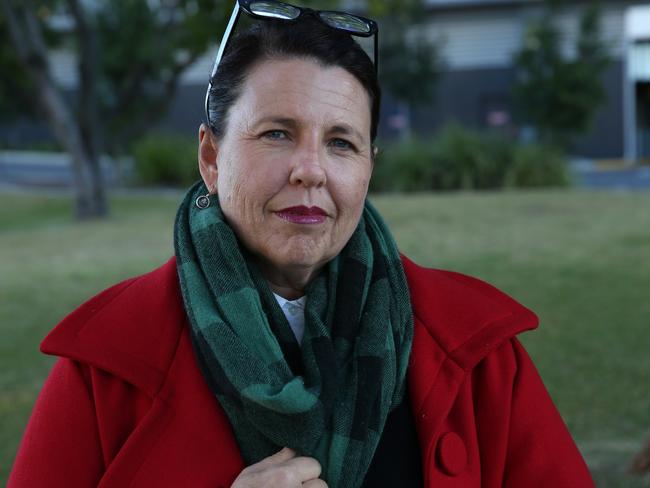
Over time, all five have written anonymous thank-you letters to the Applebys, via DonateLife Queensland. Even though they will never know his identity, one lights a candle every year in his honour. “For me, as a parent, that’s a really lovely thing to think they are really grateful for the
life that he’s given them,” Sue says through tears. “This warms me to think that they, too, will always hold him dear to their hearts. They don’t know who he is, they never can, but by his very gift, they can know a little of the sort of person he was.”
Halley’s smile glows from inside a gold locket Sue has worn since soon after he died, a present from a close friend. Her son left behind a gift for his mum that day, too. She’s about to finish a four-year double degree in arts and social work, hoping to provide grief and loss counselling, or crisis intervention, to help people in the way her family was cared for after Halley’s death. “I always wanted to go to university but never knew what I wanted to do,” Sue says. “After losing Halley, I decided I’d like to be able to support people like we had been supported by a hospital social worker. Hopefully, I will be able to return the favour.”
Of the 75,000 Australians who lose their lives in hospitals each year, less than one per cent die in a manner that makes them suitable for organ donation. DonateLife Queensland manager Tina Coco says people are ten times more likely to be a transplant recipient than a donor.
“Our goal is to educate the community about organ and tissue donation and for conversations to happen within families,” she says. “What we don’t want is for people to have to learn about organ donation in an intensive care unit when they’ve just lost someone they love.”
AS AMANDA HILL BREASTFEEDS HER newborn son, she contemplates writing to her organ donor’s family to tell them what their selfless decision has meant for her — the opportunity not only to have a life, but to give life. “I’m still trying to find the right words,” she says. “It’s really hard, still, to actually comprehend what someone else has done and to connect that this heart beating in me isn’t mine. You can’t help but be thankful, obviously.”
Her husband only has to look at his son to understand the significance of a grieving family’s gift. “Arthur’s just started giggling and making noises and chatting to himself,” Joe Reid says. “I love seeing his little face. He’s an absolute ripper little boy. I could never show enough gratitude. They’ve changed my life.”
Aug 2-9 is DonateLife Week. To sign up to the Australian Organ Donor Register, visit
donorregister.gov.au More information at donatelife.gov.au




